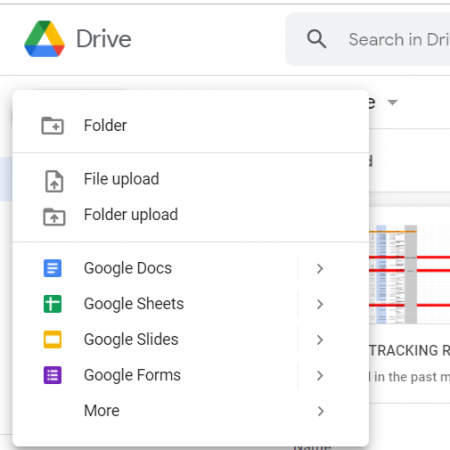Transferring Data from Excel to Google Sheets Easily

Transferring data between spreadsheets can often be a tedious task, but with the right techniques, it can be both straightforward and efficient. Whether you're a business professional sharing financial data, a student compiling research, or a freelancer managing client information, moving data from Microsoft Excel to Google Sheets can significantly enhance collaboration and accessibility. Here's a comprehensive guide to make your transition smooth and seamless.
Understanding Excel and Google Sheets

Before diving into the specifics of data transfer, it's beneficial to understand the fundamental differences between Excel and Google Sheets:
- Excel: A part of the Microsoft Office Suite, known for its powerful data analysis features, complex formulas, and advanced charting capabilities. However, it's primarily a desktop application, requiring software installation.
- Google Sheets: A web-based application from Google Workspace, offering real-time collaboration, automatic saving to Google Drive, and less complex but user-friendly tools. It's accessible directly from a web browser.
Why Transfer Data to Google Sheets?

- Collaboration: Share and work on spreadsheets simultaneously with team members, regardless of their location.
- Accessibility: Access your data from any device with internet access, enhancing mobility.
- Cost: Google Sheets is free with a Google account, while Excel often requires a paid license.
- Integration: Google Sheets integrates well with other Google services and various third-party apps.
Methods to Transfer Data from Excel to Google Sheets

1. Manual Copy-Paste

The simplest method involves:
- Opening your Excel file.
- Selecting the data you want to transfer.
- Right-clicking and choosing ‘Copy’ or using Ctrl + C.
- Opening Google Sheets, selecting the destination cell, and pasting with Ctrl + V.
⚠️ Note: This method might not preserve all formatting, conditional formatting, or macros, and can be time-consuming for large datasets.
2. Import Functionality

Google Sheets offers several import options:
- File Upload: Directly upload your Excel file to Google Drive and convert it:
- Go to Google Drive, click ‘New’, and choose ‘File upload’.
- Select your Excel file and upload it.
- Right-click the file in Google Drive, select ‘Open with’, then ‘Google Sheets’.
- Save a copy as a new Google Sheets document.
- Import Data: From within Sheets:
- Click ‘File’, then ‘Import’, and choose ‘Upload’.
- Select ‘Replace current sheet’ or ‘Create new sheet’ and upload your Excel file.
3. Using Google Drive API or Scripts

For more advanced users or frequent transfers, consider automation:
- Google Apps Script: Write scripts to automatically sync or import data from Excel files.
- Google Drive API: Programmatically upload Excel files and convert them to Sheets, which is particularly useful for large-scale or enterprise-level data management.
| Method | Pros | Cons |
|---|---|---|
| Manual Copy-Paste | Simple, No setup required | Time-consuming, Formatting loss |
| Import via Google Sheets | Quick, Preserves formatting | Upload size limits, Internet needed |
| Google Apps Script | Automated, can be scheduled | Requires technical knowledge |
| Google Drive API | Scalable, Full automation | Complex setup, Developer knowledge needed |

Ensuring a smooth transition from Excel to Google Sheets involves several considerations:
- Data Integrity: Check that all data has been transferred correctly.
- Formatting: Formatting might change, so review and adjust as necessary.
- Functionality: Excel functions and formulas might not translate directly to Google Sheets. Adjust or rewrite these functions to maintain spreadsheet functionality.
🔍 Note: It's often beneficial to keep a version of your data in both Excel and Google Sheets if significant changes are expected, ensuring you have a backup in the original format.
When your data is now in Google Sheets, collaboration becomes much more seamless. Team members can work on the document at the same time, you can add comments, and track changes. Here are some final thoughts:
- Commenting: Use Google Sheets commenting feature to discuss data entries or clarify tasks.
- Change Tracking: Google Sheets automatically tracks changes, making it easy to revert or understand modifications.
- Shared Drive: For organizational accounts, use Shared Drives to manage access and organization better.
By following these methods, you can transfer your Excel data into Google Sheets efficiently, reducing the time spent on data management and freeing up resources for more analytical or productive work. Whether you're adapting to a new work environment or aiming to enhance collaboration, Google Sheets provides a versatile platform to manage and share your data. Remember, while the transition might require some initial effort, the long-term benefits of mobility, collaboration, and integration with other Google services will pay off in efficiency and productivity.
What happens to Excel functions in Google Sheets?

+
Excel functions might need to be adjusted when transferred to Google Sheets. Some functions are the same, but many have different names or syntax. Google Sheets offers a function reference to help users adapt.
Can I automate the transfer from Excel to Google Sheets?

+
Yes, by using Google Apps Script or the Google Drive API, you can automate this process. These tools allow for scheduled uploads and conversions of Excel files to Google Sheets.
What if I lose data formatting during the transfer?

+
If formatting is lost, you might need to manually reapply the formatting in Google Sheets. Basic formatting usually transfers well, but complex formatting or Excel-specific features might require manual adjustment.
Is there a file size limit for importing Excel to Google Sheets?

+
Yes, Google Drive has a file size limit for uploading, which is currently 2GB per file. This can impact the import of very large Excel files.
How can I collaborate with others after transferring my data to Google Sheets?

+
Once your data is in Google Sheets, you can share the document via the ‘Share’ button, set permissions, and collaborate in real-time. Features like commenting, change tracking, and shared drives enhance collaboration.